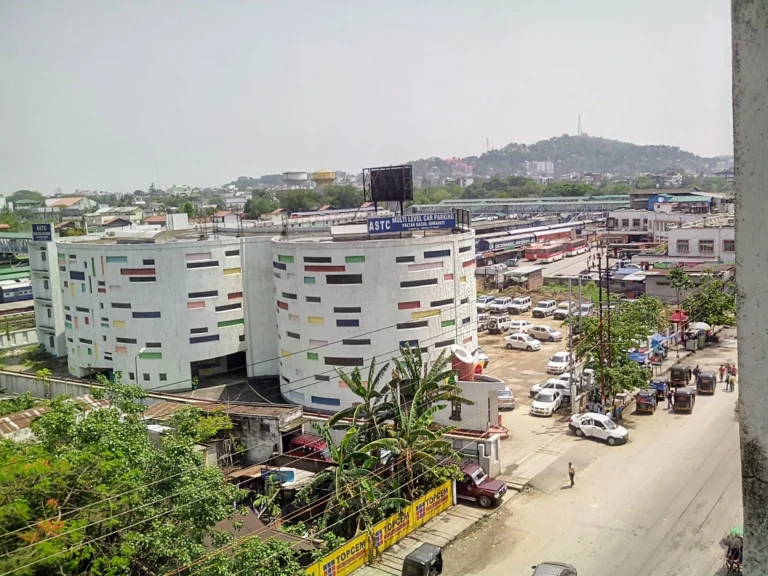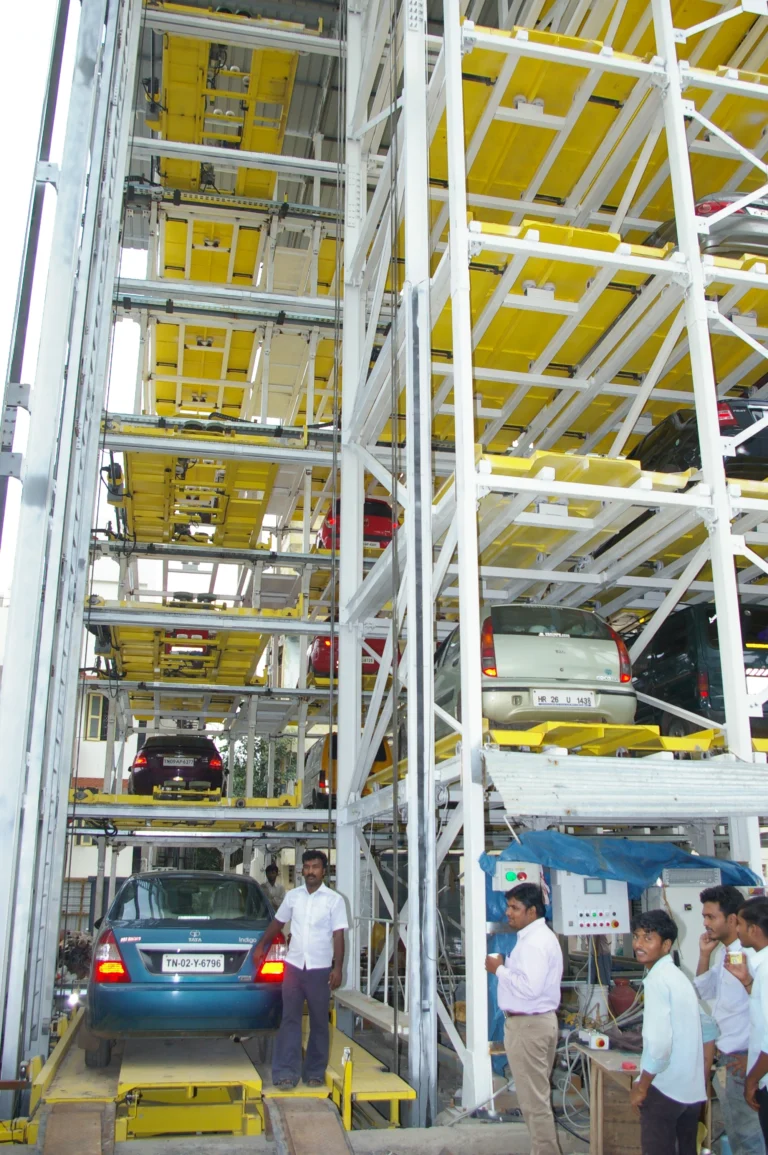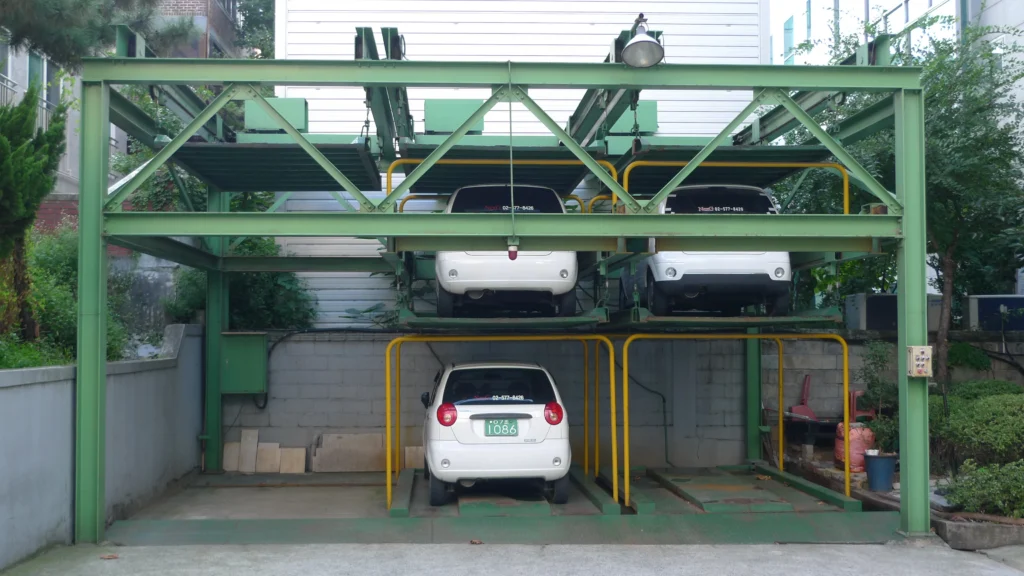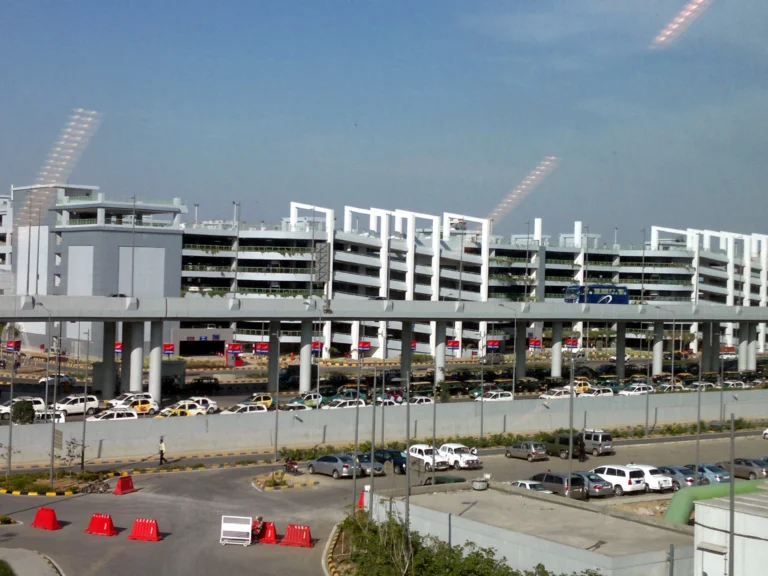
As our cities continue to grow and vehicle ownership rises steeply, parking space has become a premium commodity now. Finding secure and convenient parking spots in cities, especially in busy commercial areas is a daily challenge for countless drivers. Multilevel car parking system presents itself as a compelling and efficient solution that optimises space and streamlines car parking. These systems are quite popular for their ability to store a large number of vehicles within a smaller footprint. This makes it the perfect choice for high density urban environments.
The global adoption of multilevel parking has increased significantly due to their efficiency and effectiveness in managing vehicle congestion in hospitals, malls, and other commercial spaces. With multiple advantages over traditional parking methods, multilevel car parks are seeing increasing preference all over the globe. Here’s why.
Let’s break it down into simple terms, a multilevel car parking system is a parking facility that uses vertical stacking to store cars. Unlike traditional parking, which requires extensive horizontal space, the multilevel approach maximises parking capacity by arranging vehicles on multiple levels either underground, above ground, or a combination of both.
The primary goal of the multilevel car parking is to improve space efficiency while enabling motorists to park and retrieve their cars without congestion or excessive searching. These systems can operate both manually or with the aid of automated robotic systems. These advanced parking technologies have helped to boost convenience, reduce the environmental impact, and minimise the risks associated with traditional parking spaces.
Multilevel car parking has proven highly beneficial in areas where space is limited. Most commercial buildings and high-rise structures integrate multilevel parking into their design to accommodate the ever increasing number of vehicles visiting their premises daily.

Multilevel car parking systems operate through automated or semi-automated mechanisms that facilitate the systematic movement of vehicles. Depending on the type of system installed, cars can be parked and retrieved using lifts, hydraulic platforms, conveyor belts, or even robotic systems. Here is a quick overview of the process.
The integration of automation in multilevel parking systems has reduced the need for human intervention, saving both time and cost. Additionally, these systems help decrease traffic congestion within parking spaces while enhancing security.
Different types of multilevel parking systems are designed to cater to varying requirements and spatial constraints. Here are the major types:
Traditional Manual Multilevel Parking
In this system, human intervention is required to direct vehicles to available parking spaces. It requires a significant amount of space and manual effort, making it far less efficient than automated alternatives. Drivers have to navigate through the facility to find an empty space, while security personnel and attendants manage vehicle movement, often manually operating lifts to accommodate more vehicles.
Although a large number of these traditional parking systems are still in use today, they are gradually being replaced by automated options that require less human involvement, thereby boosting efficiency. Manual systems are prone to human error which can lead to congestion and delays, especially during peak hours.
Automated Multilevel Parking Systems
A modern system that uses mechanical lifts, turntables, and computerised tracking to streamline the entire process. Automated parking reduces space wastage, improves efficiency, and enhances vehicle security.
Smart technologies allow drivers to park effortlessly by tracking available parking slots and assigning them when needed, without needing human intervention. Some systems even feature mobile apps that allow drivers to book parking spaces in advance for added convenience.

Stack Parking System
This system uses vertically stacked platforms to store multiple vehicles in a compact space. Commonly found in underground parking areas, stack parking systems are ideal for commercial spaces where maximising space is a top priority.
The stack parking system offers flexibility and allows buildings to expand parking capacity without requiring additional land. Depending on the infrastructure, these systems can be operated manually or automatically. This proves to be an excellent solution for areas with limited horizontal space but ample vertical space.

Puzzle Parking System
Inspired by traditional sliding puzzle games, this parking system allows vehicles to move horizontally and vertically to optimise space utilisation. Puzzle parking provides flexible parking solutions with efficient use of space. Widely used in urban areas, it enables vehicles to be shuffled within the system to accommodate new entries and exits, making it particularly beneficial for locations with frequent vehicle movement, such as shopping centres and office buildings.
Fully Automated Parking System
Perhaps the most advanced solution, this system relies on robotics and AI to park and retrieve vehicles. Sensors and automated mechanisms handle the entire process without human intervention, ensuring maximum efficiency.
Full automation requires little supervision and minimises errors, making it highly advantageous for facilities with a smaller workforce. Automated systems also boost security by preventing unauthorised access to parked vehicles, and reducing emissions by minimising idle time spent searching for parking spaces.
A whole host of factors determine the ideal dimensions for a multilevel car parking facility. Here are some general guidelines.
Local building regulations should be consulted to ensure compliance with dimension guidelines set by authorities.

At Indus Parking, we don’t just install systems—we transform parking experiences. In a time when urban congestion, rising vehicle numbers, and limited space create daily parking chaos, our tailored solutions bring order and ease. Whether it’s a shopping mall, commercial complex, hospital, or residential area, our services complement multilevel car parking systems by eliminating confusion, streamlining vehicle movement, and ensuring compliance. Here are some of the services to help alleviate your parking issues.
Multilevel car parking systems have proven to be quite an effective solution to urban parking challenges. By utilising vertical space rather than horizontal, these systems are able to make the best use of the available space while also reducing congestion. A well-designed multilevel parking system can help improve the overall parking experience for both property owners and the drivers. Investing in a multilevel parking system is a smart and sustainable step towards developing urban infrastructure that benefits everyone.
Need experts to plan the perfect car parking solutions? Connect with our team at Indus Parking Services and learn how we can take care of your parking woes. Organised, hassle-free parking is now just a call away!